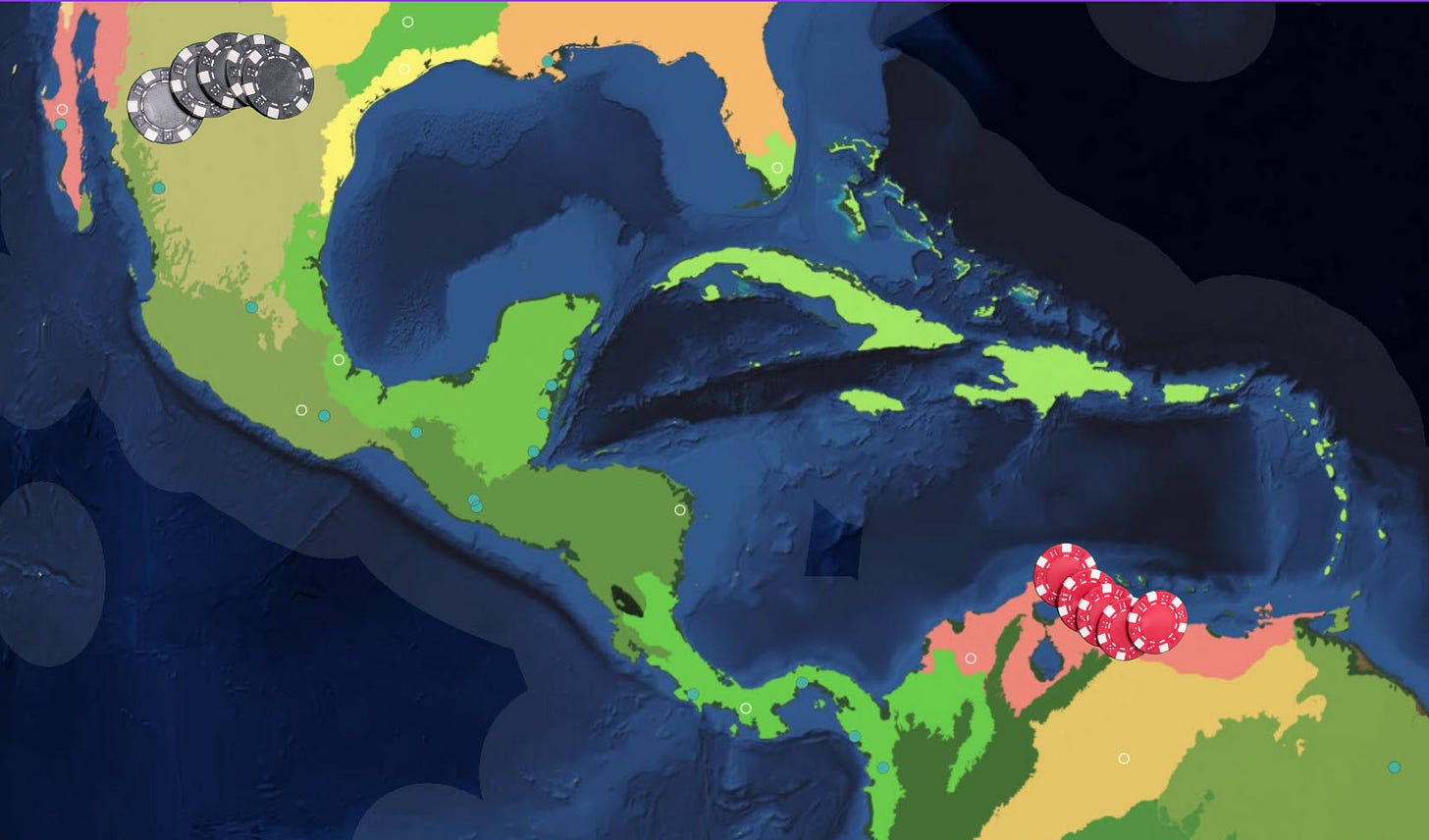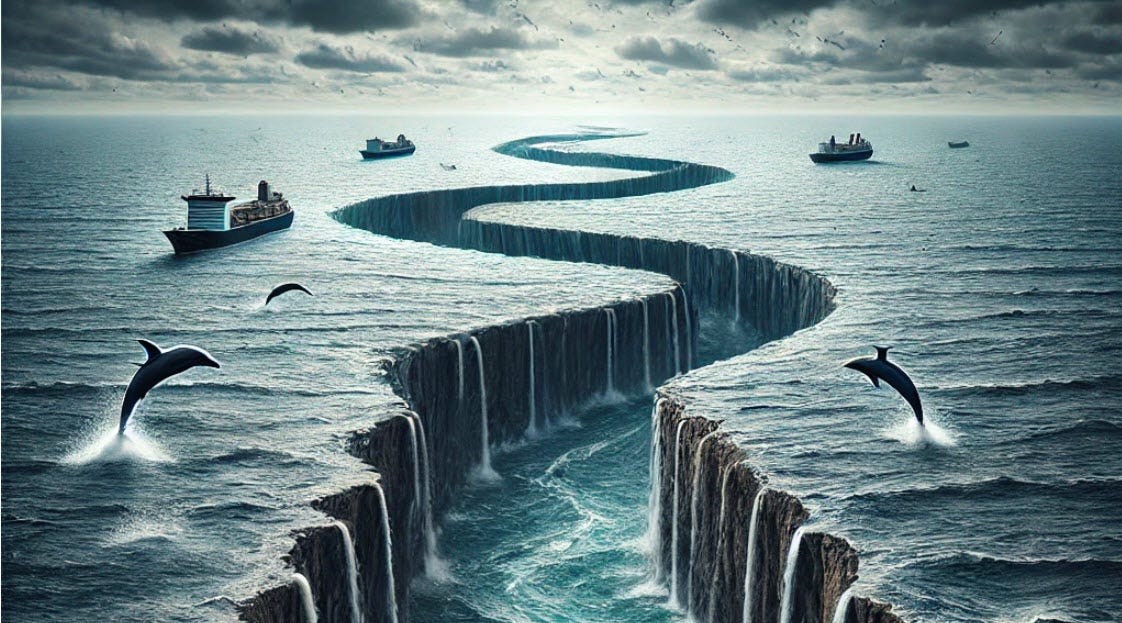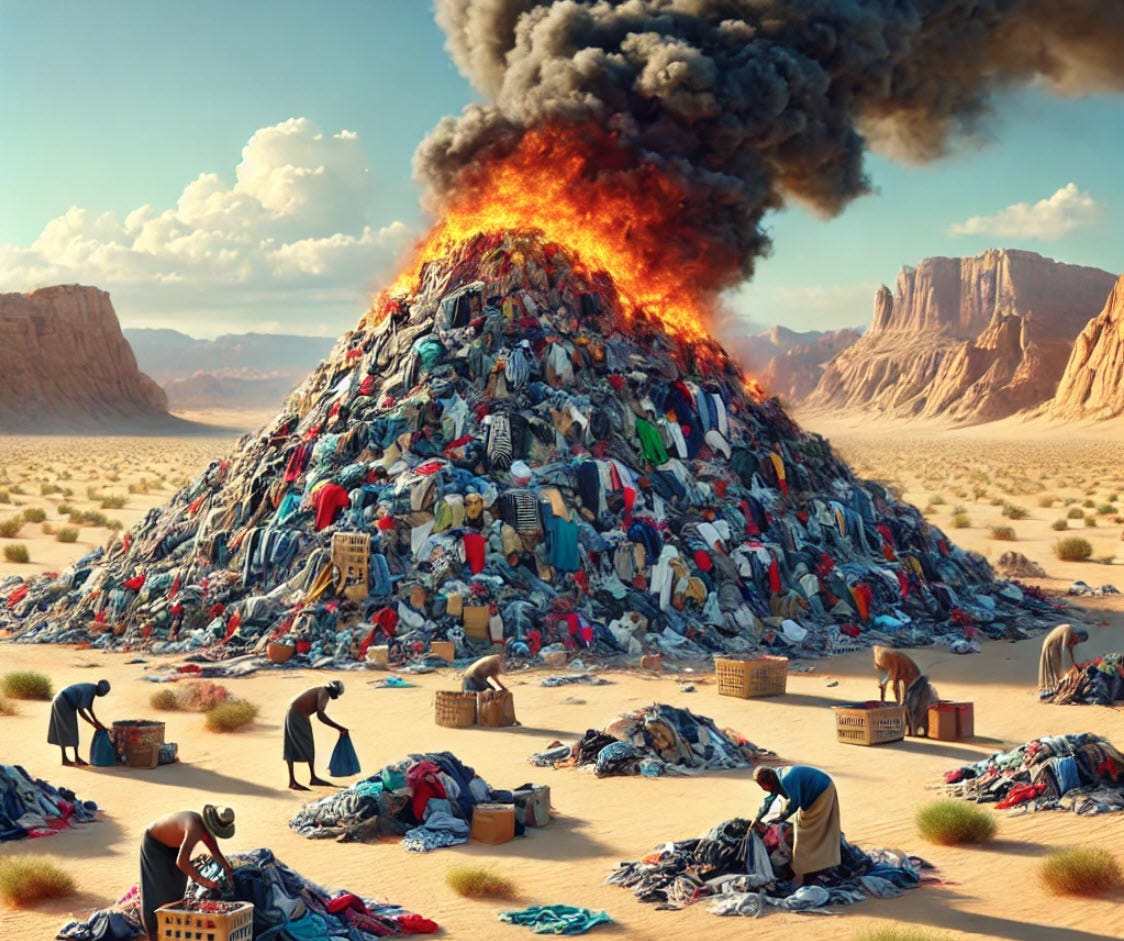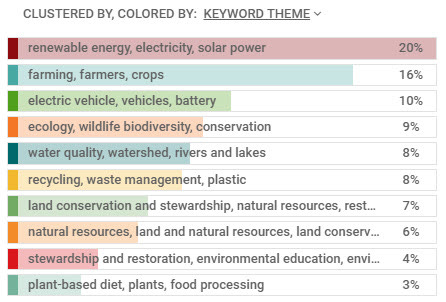September 17, 2006
1,293 words, about 6 minutes reading time
ABOUT THE BLUE DOT BRIEF
The Blue Dot Brief is brought to you by the Blue Dot Project.
Twice monthly, we cover topics related to investing in regenerative culture and community.
Please visit this page for more on our goals and purpose.
IN THIS ISSUE
Words to ponder: Marine biologist Ayana Elizabeth Johnson
1 big thing: To hedge investment risk, bet on bioregions.
How long might we have before the Atlantic Ocean changes the world’s climate even more?
Solar power comes on like a champ, despite skeptics and naysayers.
Stop buying fast fashion.
How screwed are we, and what can we do about it? Positive, optimistic views from a book released today.
Helpful resources for impact investors who fund regeneration: 50 climate leaders, and database of U.S. climate investments.
WORDS TO PONDER
Nature is incredibly resilient. Scientific research and our own eyes show us time and again that things can recover, can re-green. We can restore some balance to this magnificent planet, phase out fossil fuels, get carbon back where it belongs, salvage our ecological life-support systems.
Like most things, this is not binary, not all or nothing. It’s not planet destroyed or planet saved. Even degraded ecosystems can still support food security, economies, and well-being.
There remains a huge spectrum of possibilities. And so many lives, livelihoods, and cultures hang in the balance. Instead of accepting the climate and biodiversity apocalypse as fated (or ignoring it), we can choose to dig our way out of this morass.”
—Ayana Elizabeth Johnson, from her new book, What If We Get It Right? Visions of Climate Futures
1 BIG THING

To hedge investment risks, bet on bioregions
Who invests in bioregions?
A small but growing number of eco-savvy impact investors.
What are bioregions, and what’s their appeal to investors? They’re natural geographic areas with similar climate, ecosystems, floral, fauna, watersheds, and other geographic features. They often cross political boundaries such as state and national borders.
Why it matters
By aligning investments to systems within bioregions, impact investors can often hedge against risk, increase returns, and achieve outsized environmental benefits.
Go deeper
To learn why investment in bioregions makes sense, see the full article by Blue Dot Project founder Eduardo Esparza. (1,144 words, 6 minutes reading time.)
IN CASE YOU MISSED THESE
How soon might the Atlantic Ocean break?
The Atlantic Ocean may be nearing a tipping point that could dramatically change the climate (as well as food security and the economies) of Europe, Africa, and South America.
Situational awareness: The tipping point in question is the potential disruption of the Atlantic Meridional Overturning Current (AMOC), which circulates warm ocean water from the south and cold water from the north. The currents moderate the climate of Europe, West Africa, and eastern South America.
What’s the science behind the timelines given, and how accurate are they likely to be? See Wired, Sandra Upson. July 25, 2024.
Solar power is proving its fossil-fuel-loving skeptics wrong in so many ways
Solar energy added 428 gigawatts of capacity worldwide in 2023. That’s an increase of 76 percent over the growth in 2022. It’s also more than the growth in the two prior years combined. The data, from BloombergNEF, includes utility-scale, residential, and residential uses.
Helpful context: How much energy is 428 gigawatts? It’s enough to power almost 354 million homes that burn energy at the same rate Americans do. That’s power for more than 2.5 times the number of all housing units in the United States.
That number of gigawatts would power many more homes in other countries. Only Canada and Saudi Arabia consume more energy per capita than Americans do.
Solar is by far the fastest-growing form of energy in the world. And now clean energy is the lion’s share of new electricity capacity built in the world.
Reality check: Some critics (mainly politicians) have blamed renewable energy for causing brownouts that cut power to 4.5 million Texas homes and 10 million people in 2021. But a report from the Federal Energy Regulatory Commission (FERC) cites mismanagement, not wind or solar energy sources, as responsible for the energy problems in Texas.
Buy clothes that last, in classic styles you’ll want to wear for years
Mountains of discarded fast fashion are accumulating in Chile and Ghana. The clothing, often worn only a few times, is likely to contain synthetic fibers made from fossil fuels. It may also contain toxic chemicals—including microplastics and nanoplastics—that leach into the ground and contaminate water supplies.
If local people pick up contaminated clothing and wear it, they put their health and the public’s at risk. If they burn the clothing, they cause air pollution.
Some lawmakers are trying to limit the damage from fast fashion, but their options are limited.
What you can do: Stop buying fast fashion for yourself and your dependents. Buy only clothes you need. Invest in quality and styles that last. Wear your clothes for longer.
Favor natural fibers, preferably organically grown. Care for them so they last.
Don’t buy from the worst environmental performers in the fast fashion industry. Check the Fossil-Free Fashion Scorecard from Stand.earth. [Downloadable PDF. 2023. 164 pages. No charge.]
Understand the mind-boggling global environmental impact of the big three in fast fashion: SCHEIN, Zara (owned by Inditex), and H&M Group.
How screwed are we, and what can we do about it?
These questions are on a lot of minds. Some thought-provoking responses appear in a readable, informative, and hopeful book that refuses to hammer readers with the opportunities we’ve missed and the dismal future that lies ahead.
In What If We Get It Right? Visions of Climate Futures, Ayana Elizabeth Johnson spends about 2% of her attention on the colossal mess humans have caused for ourselves and our planet. She spends about 98% on a positive vision of opportunities still open to us.
Johnson holds a Ph.D. in marine biology who has studied the effects of climate change on marine life.
She is co-creator of the Urban Ocean Lab (UOL), a think tank that focuses on climate policy for coastal cities. UOL addresses the challenges urban environments face from rising sea levels and other climate-related changes.
In the book, released today, Johnson curates insights from scientists, activists, artists, policy wonks, and others who share their views of what a positive, attainable future could look and feel like.
SHORT TAKE
Energy impact investors are behind in limiting carbon emissions to meet climate goals.
[Downloadable PDF report. 6 pages. GIIN. June 2024. No charge.]
RESOURCES
Grist names 50 climate leaders for 2024
Expand your network of climate influencers. Build allies outside your expertise.
Grist’s list includes names, locations, and brief background on leaders in these categories: arts and media, business and tech, food and land, policy and advocacy, and science and energy.
Interactive online database offers information on climate investors in the U.S.
The Climate Finance Tracker—US offers a scatter diagram of projects or initiatives by category. You can search the data by filters. The filters include such elements as funding category, keyword mentions, government funding, executives, HQ city, company size, philanthropic vs. venture funding, total funding, etc.
WRAP UP
Thanks for your attention today and always.
If you’ve enjoyed this issue, please share it with friends or colleagues.
What would make future issues more useful and interesting for you?
If you have suggestions, questions, or comments, please share them in the Blue Dot Brief chat at Substack. Or email me at editor@bluedotproject.com. I read them all.
Look for us again on September 29.
Best wishes,
David Vranicar, editor








